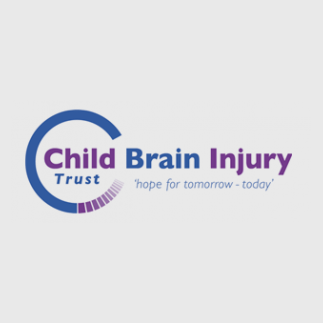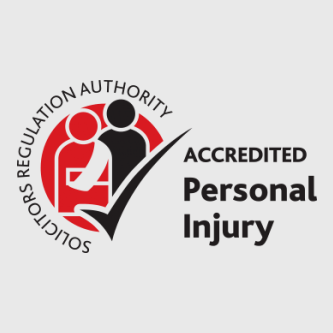Effects of cerebral palsy
Cerebral palsy is a very complex condition and its effects can vary considerably. Some cases are mild, whilst in others they can be extremely severe.
The defining characteristic of cerebral palsy is a loss of normal muscle control caused by damage to the brain either before, during or soon after birth. Some of the causes of such damage are:
- Abnormal brain development
- Blood abnormalities
- In rare cases, genetic defects
- Infection during early pregnancy
- Poisoning from drugs and other toxic substances
- Premature birth
- The brain deprived of oxygen at birth
The type of cerebral palsy depends on which part of the brain has been damaged, and this also determines the effects of the condition and the symptoms experienced. For severe cases of cerebral palsy, Court of Protection services may be required to help manage affairs for the rest of the child’s life whereas for milder instances, this is not usually necessary.
Read on to find out about the varying physical and psychological symptoms of cerebral palsy.
Physical effects of spastic cerebral palsy
Out of all the main categories, spastic cerebral palsy is the most commonly diagnosed type.
It is caused by damage to the outer layer of the brain – the cerebral cortex – and usually affects either one side of the body (hemiplegia), the body’s lower half/legs (diplegia) or all four limbs together (quadriplegia).
This damage prevents the brain from communicating properly to the muscles via the body’s nervous system and its effect on the body is ‘spasticity’, or an increase in muscle tone called hypertonia that causes stiffness and tightness in the affected area.
Spasticity describes excessive tension in the muscles, so where the muscles of a normally functioning limb would contract and relax in tandem to provide movement, those same muscles on the limb of someone with spastic cerebral palsy would both contract, thus preventing coordination and causing awkward, jerky movements.
The affected limbs will be underdeveloped and have abnormal muscle tone. This can cause limbs to be held in unusual positions, for example, children with spastic diplegic cerebral palsy may cross their legs in a scissor-like position, or walk on their toes. Another severely debilitating effect of spasticity is that different strength muscles can put unequal pressure on the joints, causing them to stiffen and lock.
In healthy children, muscles grow when they are stretched, typically through playing and running. However, children with severe spasticity are simply unable to stretch their muscles, preventing the vital protein generation in them that promotes normal growth. As a result, muscle imbalances can lead to a curvature of the spine (scoliosis) and over time, deformities can develop in the feet, hands and arms.
Spastic cerebral palsy is not a classified as a progressive condition because the damage to the brain does not get any worse. However, the effects on the body do change over time. The spasticity in the muscles can become more severe and the stiffness of the muscles can continue to increase. The range of movement possible by the limbs decreases and it takes a great deal more effort for the person to try to compensate for this, increasing fatigue and often causing pain. As a result, secondary complications such as arthritis and tendinitis can develop over time.
Learning disabilities can be an extreme effect, and those with spastic quadriplegia are 50% more likely to develop it. However, it is also just as possible for intelligence not to be affected, and in some cases it may be above average. Those with spastic quadriplegia are also likely to have impairments of speech due to poor muscle and motor control in the mouth, and this inability to communicate and express themselves can be a root cause of learning difficulties.
Physical effects of athetoid cerebral palsy
Athetoid cerebral palsy is a condition that affects between 10% and 20% of all known cases.
It is caused by damage or abnormalities to a part of the mid-brain called the basal ganglia. This interferes with the normal transmission of electrical signals from the brain to the muscles, usually affecting the hands, arms, feet and legs (quadriplegia).
Athetoid cerebral palsy (sometimes referred to as dyskinetic cerebral palsy) is where there is a mix of muscle tones. Some muscles suffer from increased muscle tone causing tightness (hypertonia), but other muscles suffer from decreased tone causing reduced strength and floppiness (hypotonia). The effect of this imbalanced muscle tone on the body is the constant slow, writhing and involuntary body movement that characterises the condition.
These involuntary movements can alternate between the large and small, the jerky and rapid, and the repetitively erratic. They often increase and become more pronounced during times of stress or emotional excitement, but subside completely when asleep or even when distracted.
In addition, athetoid cerebral palsy can cause complications to muscles in the face, mouth and tongue which can cause drooling and grimacing. Difficulty eating is prevalent and speech complications are also common. In severe cases athetoid cerebral palsy can result in dysarthia, a condition caused by the poorly functioning tongue and the muscles that control breathing and the vocal cords.
The mixed muscle tone of athetoid cerebral palsy can cause the patient to have difficulty maintaining posture when standing, sitting or walking. They also have difficulty in reaching and gripping objects and must work extremely hard to complete even the most basic of arm movements, which can then result in very large involuntary muscle spasms throughout the whole body. In addition, athetoid cerebral palsy’s secondary effects can include hearing loss, involuntary eye movement and strabismus (where the eyes are prevented from aiming at the same point).
Physical effects of ataxic cerebral palsy
Ataxic cerebral palsy is the least common form of cerebral palsy and affects less than 10% of cases.
It is caused by damage to the cerebellum, a small area at the base of the brain that is responsible for coordinating balance and muscle movement. The term ataxia means the loss of full body movement control and whilst it is somewhat less debilitating than the other two main types of cerebral palsy, it can still have a substantial impact on the patient nonetheless.
The damage to the brain causes problems throughout the body – the arms, legs and trunk in particular. The most visible of these effects is a symptom called an intention tremor, which means that when somebody is trying to use their hands to complete a relatively routine task, for example reaching for something and trying to grip, their hands begin to shake and tremble, getting progressively worse the closer they get to the object.
Another obvious effect of ataxic cerebral palsy is that due to their poor coordination, patients often walk with an unusually wide gait (feet set widely apart). It causes a level of unsteadiness, not helped by poor depth perception, which means the patient is constantly moving and readjusting their body in an attempt to find balance.
The symptoms of ataxic cerebral palsy are usually identified within the first two years of life. This is when the cerebellum area of the brain develops rapidly and the child acquires new motor skills. During this period, hypotonia (decreased muscle tone or floppiness of the muscles) is at its strongest, and although there is improvement over time, the muscles never fully recover. There is weakness in the arms and legs, poor coordination, involuntary movements and tremors causing the child to take much longer to be able to walk independently.
No two people with ataxic cerebral palsy will have the exact same experience but the ataxia itself improves up until around the age of eight to ten, at which point the maximum development of movement and balance has been reached.
Approximately half of all children with ataxic cerebral palsy can suffer from learning difficulties or a speech impediment whereas in other cases intelligence can be completely unaffected. Like all other forms of cerebral palsy, hearing and vision can be affected.
Physical effects of mixed cerebral palsy
Any combination of the main types of cerebral palsy can occur, including all three at once. This means that the patient will display the physical effects of each of the individual categories of palsy, although certain effects are dominant.
The most common type of mixed cerebral palsy exhibits the symptoms of both spastic cerebral palsy and athetoid cerebral palsy, with the symptoms of spasticity being the most pronounced and therefore usually identified earliest, although the athetoid symptoms progress and become more pronounced as the child grows.
Meanwhile, the least common combination of mixed cerebral palsy is athetoid and ataxic. In these cases, the athetoid symptoms of involuntary, purposeless movements in the face, arms and trunk are visually dominant. All people suffer from such involuntary muscle movements (albeit minor twitches caused by electrical stimulation of the muscle), but people who have mixed cerebral palsy involving athetoid CP have them with such frequency and severity that they seriously impact on day to day life.
The involuntary movements increase during times of stress, which can impair speech, cause drooling and increase muscular problems when swallowing. Meanwhile, there can also be low muscle tone and problems with balance and posture.
In addition, learning disabilities are commonly linked to mixed cerebral palsy, although like other types this can range from the mild to the severe.
Secondary physical effects
Although there are three main categories of cerebral palsy, each with their own particular characteristics, the condition itself varies considerably with patients experiencing a wide-ranging variety of secondary effects. For example, a brief selection is listed below:
- ADHD or ADD
- Bladder and bowel control problems
- Breathing difficulties
- Deformed bones and joints
- Difficulty sleeping
- Digestion problems
- Heightened or reduced sensitivity of touch, smell and sound
- Low bone density
- Malnutrition
- Seizures and epilepsy
Some people with cerebral palsy develop coping strategies, sometimes classed as tertiary effects, which attempt to compensate for their complications. Most notably, this is done when walking, and people with spasticity who have trouble in bending their knee joints will swing their foot round in a circular motion when taking steps, as opposed to in a straight line.
Emotional effects of cerebral palsy
Childhood
Studies led by Newcastle University in 2007 revealed that children with cerebral palsy tend not to suffer a diminished quality of life and in fact, are just as happy as healthy children. This can be comforting and reassuring to parents, considering the upsetting experience of when the child is first diagnosed.
Children with cerebral palsy tend to feel the same as healthy children in areas such as psychological wellbeing, mood, parental relationships and friendships. A lot of this depends on the parents’ behaviour, as those that mainly devote their attention and conversations towards their child’s cerebral palsy may cause them to have problems in developing a sense of individuality. They may feel that even their parents only see the disability, not the person. On the other hand, if parents involve their child in engaging conversations about their likes, dislikes, ambitions and so forth – the things that are the essence of what makes them who they really are – then they have a much better chance of developing a strong sense of self at an early age and a greater feeling of general happiness.
The study revealed that it is psychologically beneficial for the child when doctors discuss their condition directly with them, finding out their personal needs and preferences rather than adhering to standard procedures. For example, a child may be encouraged to learn to walk, but because it causes great discomfort and huge amounts of physical effort, they may find that using a wheelchair is a much more liberating experience thus improving wellbeing.
The study implies that the key is to engage the child, always.
Adulthood
As people with cerebral palsy get older, entering adulthood could mean a swing in how they cope with the emotional impact of their condition. With age comes a greater understanding of the disorder and also a more refined awareness of their situation. Therefore, it is no surprise that adults with disabilities are three to four times more likely to suffer from depression, the all-encompassing illness that cloaks people with inescapable feelings of sadness, hopelessness and despair.
Someone with cerebral palsy can feel increased levels of pain as they age, and unfortunately for those that suffer from chronic pain, they are most likely to suffer from depression. Low self-esteem and negative self-image is also prevalent for people with cerebral palsy. There may be some frustration, anger or sadness at their physical impairments and the stigma that the condition carries in some parts of society.
During adulthood, anxiety can also affect people with cerebral palsy. It is often the result of a recognition of their own slowly declining condition, which causes an all-pervading fear and panic about how such degenerative effects will impact their lives. Anxiety can cause people to hyperventilate, their heart rate to increase and can put them under incredible feelings of stress
It is vitally important that such psychological issues are recognised and treated by medical professionals, as well as receiving professional treatment for pain management.
Learn more about the medical and professional care available to people with cerebral palsy in our treatment section.









